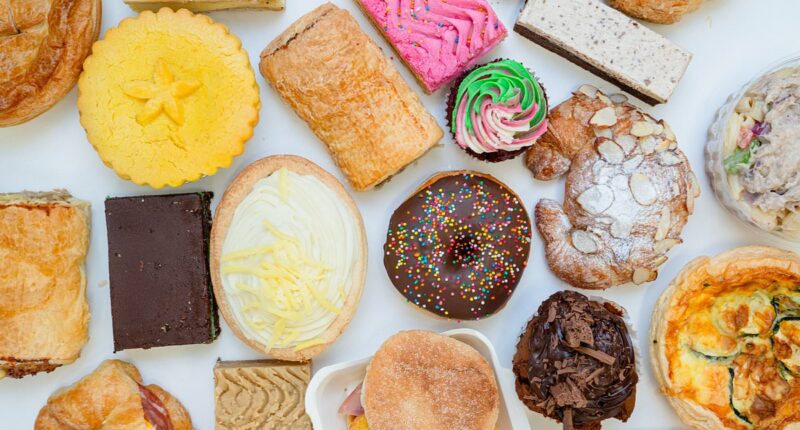Share this @internewscast.com
It’s a scenario many can relate to: the evening has settled in, dinner is over, and although you’re not hungry, the allure of a biscuit or a piece of chocolate beckons as you unwind in front of the TV.
Suddenly, you find yourself abandoning the comfort of your sofa, scouring the kitchen for that sweet indulgence to quell your craving.
These cravings don’t just strike at home; they can emerge between meals or when tantalizing aromas from a nearby bakery or restaurant waft through the air.
While nearly everyone experiences food cravings, they can often be an unwelcome part of life, triggering anxiety or self-criticism, especially for those striving to reduce sugar intake, cut down on processed foods, or exert greater control over their eating habits.
According to Robbie Puddick, a nutritionist affiliated with the NHS-backed healthy eating initiative Second Nature, these food cravings are not indicative of personal weakness. “Cravings are our brain’s response to both nutritional and psychological needs,” he explains.
Puddick further elaborates, “Cravings generally arise from two primary sources: nutritional factors, such as inadequate food intake, avoiding certain foods, or long intervals between meals, and psychological factors, including stress, emotions, and unmet needs.”
In fact, in a 2023 study, Bangor University researchers found that people with higher levels of stress were significantly more likely to report weight gain and twice as likely to report increased food cravings and comfort food consumption.
In turn, people who report an increase in food cravings were six to 11 times more likely to snack and have increased consumption of high sugar or processed foods.

Mr Puddick says that knowing more about cravings is the key to being able to override them
Today the term ‘food noise’ has become a common phrase to describe the persistent, unwelcome thoughts about food that often drive cravings.
Mr Puddick told the Daily Mail that knowing more about cravings is the key to being able to override them.
‘Understanding that cravings are a normal response, not a personal failing, is crucial.’
He says that brains are ‘hard-wired’ to seek high-energy foods; particularly when we’re not nourishing ourselves adequately.
‘When we restrict foods or eat too little, our brain increases our hunger hormone and heightens our senses, making us especially sensitive to high-energy food cues like chocolate, crisps, or ice cream,’ he says.
‘These cravings intensify when we’re physically underfed or emotionally depleted.
‘Additionally, if we’ve been using food as our primary coping mechanism for stress or difficult emotions, these neural pathways strengthen over time. Recognising these patterns helps us understand that cravings often signal an unmet need, whether that’s proper nourishment or emotional support.’
Yet a simple 15-minute routine can help you decode what’s really driving your cravings and provide evidence-based tools to respond differently, addressing both the physical and emotional aspects of food cravings.

Cravings intensify when we’re physically underfed or emotionally depleted, says our expert
Here Mr Puddick explains the three key steps that will help you banish your cravings for good.
Mr Puddick also revealed a good reactive strategy for beating cravings is a technique called ‘urge surfing’. Imagine a craving as a wave, starting small and increasing in intensity.
Instead of fighting it, visualise yourself surfing the wave and experiencing the ups and downs.
As the wave builds, you might feel restless or obsessive thoughts about food and feel compelled to act on the craving at its peak. But acting on it reinforces the brain’s association between craving and food reward.
To urge surf, set a timer and note how long you can tolerate the craving before acting on it. Next time, try extending it by a minute or two.
During the craving, engage in an alternative activity that disrupts the craving-reward association, such as deep breathing, calling a loved one, or taking a walk.
By redirecting our attention elsewhere and letting the craving pass, our brain gradually dissociates the craving from the food reward or associates the cue with something more helpful.













